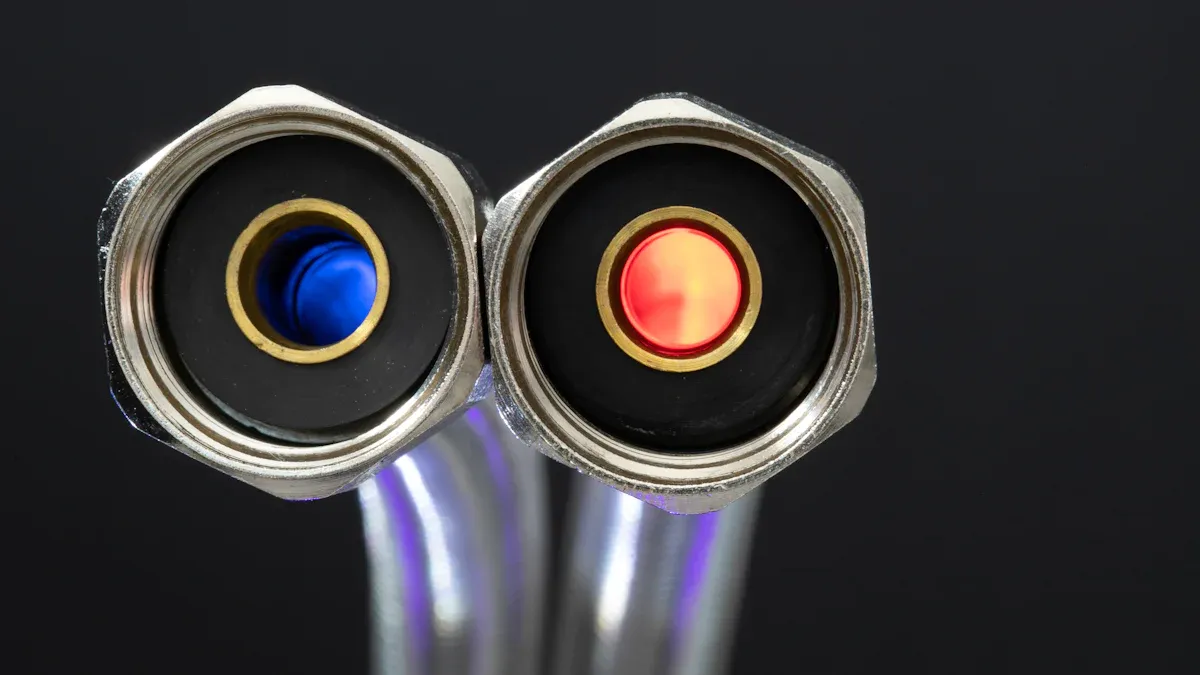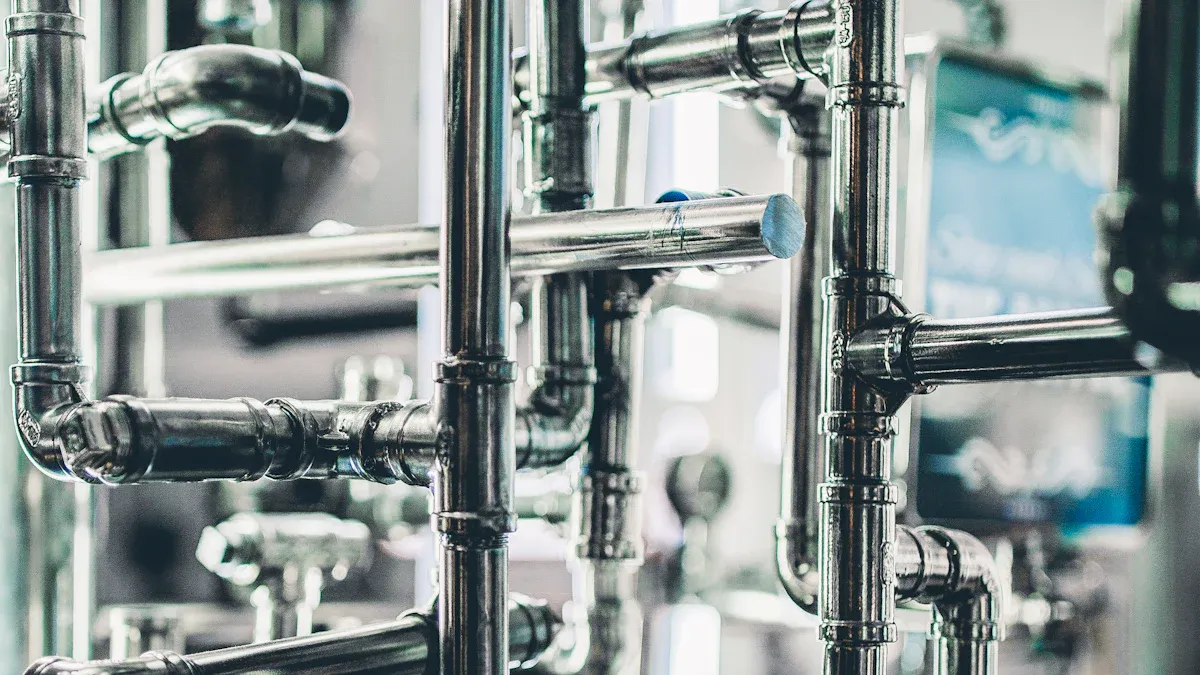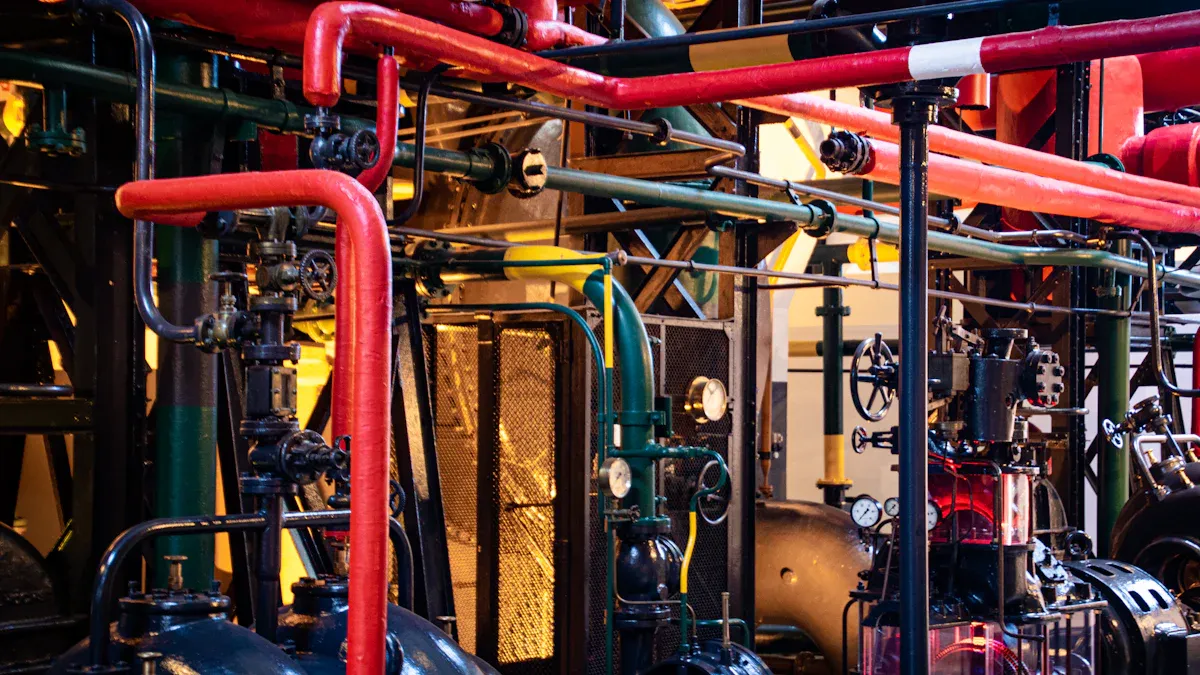Surprising Benefits of Polyimide Tubing for Pressure

Polyimide tubing for high-pressure applications is highly effective due to its unique characteristics.
It is incredibly strong and endures heavy stress.
The tubing remains flexible and can withstand extreme temperatures.
It operates efficiently in temperatures ranging from −196 °C to 295 °C.
This versatility makes it ideal for challenging environments.
Various industries utilize polyimide tubing for high-pressure applications, including aerospace and medical sectors.
In aerospace, it is lightweight and robust, making it suitable for fuel lines and insulation.
In the medical field, it is employed in devices such as catheters.
These applications highlight why polyimide tubing for high-pressure applications is exceptional for demanding tasks. It is dependable and delivers outstanding performance.
Key Takeaways
Polyimide tubing is strong and bendable, perfect for high-pressure jobs in fields like space travel and healthcare.
It works well in very hot or cold temperatures, from −196 °C to 295 °C, making it reliable in tough conditions.
Polyimide tubing is safe for medical tools and passes strict safety checks, so it’s great for things like catheters.
Picking the right polyimide tubing means thinking about its size, features, and what you need it for.
Polyimide tubing might cost more at first, but it lasts long and saves money over time.
Why Polyimide Tubing is Ideal for High-Pressure Applications

Key Material Properties of Polyimide Tubing
Polyimide tubing is special because of its amazing material properties. It works well in high-pressure situations and extreme temperatures. It can handle very cold to nearly 300°C heat. This makes it perfect for industries like aerospace and automotive, where parts face tough conditions. It also provides great electrical insulation, which is important for safe and efficient electronics.
Polyimide tubing is also very strong. Tests show it can stretch and handle high stress without breaking. For instance, polyimide mixed with carbon nanotubes can handle up to 107.7 MPa of stress. It can stretch over 130% before breaking. These features help it stay strong under heavy pressure.
Another benefit is that polyimide tubing is safe for medical use. It resists chemicals and lasts a long time, making it great for devices like catheters. Tests prove it meets strict healthcare safety rules, making it reliable for medical applications.
Type of Tubing | Tensile Stress (MPa) | Elongation at Break (%) | Bending Strength (MPa) |
|---|---|---|---|
Polyimide Composite (SWCNT 1.0%) | 94 | 36 | N/A |
Polyimide Composite (SWCNT 2.0%) | 107.7 | 130.9 | N/A |
Polyimide Composite (Carbon Fibers) | N/A | N/A | 32 |
These features make polyimide tubing a strong and flexible choice for many industries needing high-pressure solutions.
Advantages of Polyimide Tubing Over Alternative Materials
Polyimide tubing has many benefits compared to other materials. It is light but very strong, which is great for reducing weight in aerospace projects. Unlike metals, it does not rust, so it lasts longer even in harsh chemical environments.
It also handles heat and stays flexible better than most plastics. Many plastics melt or lose shape in high heat, but polyimide tubing stays strong. This makes it perfect for jobs where steady performance is needed.
In medicine, polyimide tubing is safe for the human body. It passes strict tests to ensure it is safe and reliable. This makes it a trusted material for medical tools like catheters. These tools need to be flexible, chemical-resistant, and safe for patients.
Tip: Need a material that is strong, flexible, and safe? Polyimide tubing is a great option. Its unique features make it useful for high-pressure tasks in fields like healthcare and aerospace.
Top Polyimide Tubing Products for High-Pressure Applications

Product 1 - Features, Benefits, and Use Cases
AccuPath's Polyimide Microbore Tubing is a great choice for high-pressure tasks. It works well because of its precise size and strong materials. Key features include:
ID Sizes and Wall Thickness: Comes in many sizes with thin walls for accuracy.
Multi-layered Forms: Combines polyimide and PI Glide™ layers for custom uses.
Reinforcement Options: Braids and coils make it flexible and prevent kinks.
Chemical Resistance: Handles acids and solvents, perfect for medical tools.
Low Coefficient of Friction: PI Glide™ makes devices slide smoothly.
Thermal Stability: Works well in very hot or cold temperatures.
This tubing is helpful in biomedical applications like catheters and surgery tools. It is safe for medical use, proven by strict tests. Customers love its strength and accuracy, saying, "Great product. Great service, thank you."
Product | Rating | Reviews Count | Customer Feedback |
|---|---|---|---|
Polyimide Microbore Tubing | 5.0 | 2 | Great Product. Great service, Thank you. Great product. |
Product 2 - Features, Benefits, and Use Cases
AccuPath's Polyimide Medical Tubing is another top choice for high-pressure needs. It is made for the medical field and is both strong and safe. Key features include:
Biocompatibility: Passes strict tests to ensure safety in medical devices.
High Strength: Stays strong even when very small, handling pressure well.
Dielectric Properties: Protects electronics while staying tough.
Chemical Resistance: Resists harsh chemicals, lasting a long time.
This tubing is used in biomedical applications like diagnostic tools and surgical gear. It performs well under tough conditions, making it trusted by doctors. Customers praise its quality, saying, "It consistently outperforms similar products I've tried, making it a staple in my home."
Performance Aspect | Customer Quote |
|---|---|
Speed | "It consistently outperforms similar products I've tried, making it a staple in my home." |
Battery Life | "Compared to Brand X, this product has a much better battery life and user interface." |
Product 3 - Features, Benefits, and Use Cases
AccuPath's Polyimide Tubing for Aerospace Applications is built for tough aerospace jobs. It is lightweight and very strong. Key features include:
Thermal Stability: Works in temperatures from −196 °C to 295 °C.
High Strength: Handles heavy stress without losing performance.
Chemical Resistance: Resists corrosion and chemicals for long-term use.
Multi-layered Construction: Adds flexibility and strength for complex systems.
This tubing is great for fuel lines, insulation, and other aerospace parts. Its light weight helps systems work better. The aerospace industry is using more polyimide tubing, with growth expected at 7.90% yearly from 2024 to 2031. This rise comes from the need for better materials in high-performance jobs.
Segment Type | Insights | Growth Rate |
|---|---|---|
Polyimide Medical Tubing | Significant growth driven by advanced materials | Projected CAGR of 7.90% |
Note: AccuPath's polyimide tubing products are made to meet top standards. Whether you work in medicine, aerospace, or electronics, these products are reliable for high-pressure tasks.
Choosing the Right Polyimide Tubing for Your Needs
Factors to Consider When Selecting Polyimide Tubing
Picking the right polyimide tubing depends on a few key things. First, think about where you will use it. Polyimides work well in fields like aerospace, cars, and medicine. For medical uses, the tubing must meet strict safety rules. Always check if it passed biocompatibility tests before using it in medical tools.
Next, look at the tubing's material features. Polyimides are strong, resist chemicals, and handle heat well. These traits make them great for high-pressure jobs. If your work involves extreme heat or chemicals, polyimide tubing is a reliable option. Also, check if it is flexible and durable, especially for medical tools like catheters.
Lastly, think about the tubing's size and design options. Polyimide tubing comes in different sizes and thicknesses. This helps you pick the right one for your needs. Some types also have extra layers or reinforcements for more strength and flexibility.
Tip: Talk to suppliers to ensure the tubing fits your needs, especially for important uses like medical or aerospace.
Balancing Cost and Performance in Polyimide Tubing
When choosing polyimide tubing, balancing price and quality is important. Polyimides are high-quality but can cost more than other materials. However, they last longer and need fewer replacements, saving money over time.
The Seamless Polyimide Tubing Market Report 2025 shows how trends affect cost and quality. It shares data on market size, competitors, and future predictions. This helps you pick tubing that gives the best value.
For medical uses, focus on safety and quality over price. Medical tubing must pass strict safety tests to protect patients. Spending more on good tubing lowers risks and makes devices work better. In aerospace, lightweight and strong polyimides improve performance, making the higher cost worth it.
Note: Compare products from different brands. Check their features, certifications, and prices to find the best option.
Polyimide tubing is a top choice for high-pressure tasks. It has special features like:
Biocompatibility to ensure safety in medical devices.
Thermoxidative resistance to work in tough environments.
Strength and flexibility to handle heavy loads.
Chemical and radiation inertness for lasting performance.
Durability with a long shelf life, saving money over time.
These qualities make polyimide tubing essential in medicine and aerospace. For instance, the demand for cardiovascular catheters and urology tools is growing due to its reliability.
Key Application | Growth Trend |
|---|---|
Cardiovascular Catheter | Expected to grow at a fast rate |
Urology Retrieval Equipment | Holds a big share in the market |
Intravascular Drug Delivery | Predicted to grow quickly in coming years |
The global polyimide medical tubing market is set to rise. It may grow from USD 500 million in 2023 to USD 950 million by 2032. Its ability to meet strict standards while performing well makes it a trusted choice for high-pressure uses.
Think about your needs and check the reviewed products. Polyimide tubing might be the solution for stronger, safer, and longer-lasting applications.
FAQ
Why is polyimide tubing better for high-pressure tasks?
Polyimide tubing is strong, flexible, and handles heat well. It works in tough conditions where other materials fail. Its resistance to chemicals and long life make it a smart choice for industries like aerospace and healthcare.
Can polyimide tubing handle very hot or cold temperatures?
Yes, polyimide tubing works from −196 °C to 295 °C. This wide range makes it perfect for harsh environments, like aerospace systems or medical tools.
Is polyimide tubing safe for medical tools?
Polyimide tubing meets strict safety rules for medical use. It resists chemicals and lasts long, making it great for catheters, surgery tools, and diagnostic devices.
How do you pick the right polyimide tubing?
Think about where you’ll use it, its size, and features. For medical tools, check if it passed safety tests. For aerospace, focus on strength and heat resistance. Always ask suppliers to help you choose the best option.
Is polyimide tubing worth the higher price?
Yes! Polyimide tubing costs more but lasts longer and works better. It reduces replacements and stays reliable for important tasks, saving money over time.
Tip: Think about long-term savings when choosing materials for tough jobs.
See Also
Comparing FEP Heat Shrink Tubing and PTFE Chemical Resistance
Advantages of Using FEP Heat Shrink Tubing in Healthcare
FEP Dielectric Tubing: The Best Choice for Insulation
Key Considerations for Selecting FEP Shrink Tubing
Key Uses of Ultrathin-Wall PET Heat Shrink Tubing in Medicine

